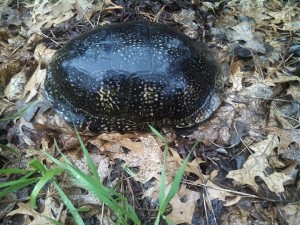
Six-lined racerunner (Aspidoscelis sexlineatus) is the largest lizard in Minnesota. It occurs on blufflands and river terraces in the southeastern part of the state. It is found mostly on south-facing bluffs, in river floodplains, and on sandy outwashes. Populations tend to be localized and isolated. Minnesota does not give it a protected status but lists it as a Species in Greatest Conservation Need.
Adults are most active in the morning, bask on rocks in the afternoon, and spend the night in a burrow (sound familiar?). They move with short, quick, bursts of speed. They will eat most arthropods, especially grasshoppers and crickets, but also beetle larvae, ants, spiders, and mollusks.
When attacked by a predator, the racerunner will detach its all or part of its tail. The tail will continue to wiggle and distract the predator while the racerunner seeks cover. The tail will regrow but will not be as long as the original.
Of the three lizards native to Minnesota, six-lined racerunner is the largest. There are three light yellow or yellowish-green stripes on each side. This is the feature that gives the racerunner its common name and distinguishes it from the other two lizards in Minnesota.
http://www.minnesotaseasons.com/Reptiles/six-lined_racerunner.html




